A community making great strides for youth
First stop: the Boll Family YMCA…in the heart of downtown Detroit!
On December 5, 2005, the new John and Marlene
Boll Family YMCA opened to great fanfare and acclaim from Detroit media and beyond. Deemed “one of the finest YMCAs in the world” by Ken Gladish, president of the YMCA of the USA, the facility is really three YMCAs in one: a health and wellness facility, an arts and humanities center (with a 200-seat theater) and a child development center.
With the facility open and filling with some of the 8,000 expected members, the YMCA is now turning its attention to a unique project in the backyard. As the construction progressed last fall, the Y discovered 1700 square feet immediately adjacent to the YMCA in the shadow of Detroit’s People Mover train tracks—“a perfect place for a neighborhood playground and park,” according to Dan Maier, executive vice president at the YMCA. “Every city needs every inch of green space and Detroit in particular.”
The playground, fully maintained by the YMCA, will serve the child development center during the day and open to the community after hours and on weekends.
With landscaping, fencing and age suitable playground equipment, the price tag of $500,000 was not in the original construction budget. However, during these winter months, the YMCA continues to seek donors to help make this urban green oasis come true. You could even put your name on this park according to the Y.
To learn more about the YMCA or contribute to the project, seek www.ymcadetroit.org or call the YMCA at 313-267-5300.
On September 8, the YMCA of Metropolitan Detroit determined to honor a very special family by renaming the new facility. So on December 5, 2005, thousands of new YMCA members were welcomed at the John and Marlene Boll Family YMCA.
“Many generous supporters have made this new facility possible and the names of those contributors will grace the walls of this state-of-the-art building,” said Ben Maibach III, chair of the YMCA’s Building Strong Kids Campaign. “But one family—above all others—has made the vision for this new building a reality. We are naming this building for them, to honor them for their unwavering belief in this dream. Belief that inspired others to join the collective effort that made this dream a reality.”
The Bolls are generous philanthropists dedicated to improving the City of Detroit. Both John and Marlene are active on a number of great organizations. John Boll served on the board of the South Macomb YMCA, including serving as chair for four years in the 1970s. For more information about the Boll family, visit the Boll Family YMCA page at www.ymcadetroit.org.
The Boll Family YMCA opened the first week of December. Memberships are on sale now. Call the Boll Family YMCA at 313-309-9622 for information on membership and programs, or visit the website. Current members of other YMCA facilities can also join the Boll Family YMCA. Contact the front desk at your branch for details.
Next stop…City of Detroit
The City of Detroit recently had a Protective Surface Article published: “Making the Grade: City of Detroit Sets Strict Specs to Ensure New Playground Surfaces are Safe and Accessible.”
With a limited budget and 360 parks located on more than 6,000 acres, City of Detroit Recreation Department Planning, Design and Construction Management Division have taken an innovative approach to ensure the biggest bang for their buck when purchasing new playground surfacing. Through the bid process, the city has instituted quality assurance specifications for impact attenuation and accessibility of newly installed playground surfacing. The City of Detroit is featured in NCA’s latest “Making the Grade” column, you can view the full story: at www.ncaonline.org/making-the-grade/detroit.shtml.
The efforts to improve Detroit’s neighborhood parks, under the direction of the mayor, the Honorable Kwame M. Kilpatrick, and the Detroit Recreation Department team has made improvements to more than 30 park locations within the last three years, to the accolades of the Detroit’s youth and citizens alike.
Visit with Vicki Crawford, President of Jennings of Michigan
As a child, I played on monkey bars at Stoepel Park on Outer Drive and Evergreen. Until just last year, the neighborhood kids were still playing on them. Last year Stoepel, along with several other aging City parks, were given complete makeovers. How wonderful for the children who live near these neighborhood parks, especially those who never were able to use the old equipment due in part to physical disabilities. The new parks are not only beautiful but functional for kids of all abilities, something that was not considered 40 or 50 years ago.
Although I have not lived in the City for 30 years, it still is my home, and it has pained me to see the neglect that had overtaken most of the neighborhood parks. With a new commitment and resources from various different public and private groups, under the direction of Mayor Kwame Kilpatrick and recreation director Vincent Anwunah, the City has set about to correct this. Over the last several years they have improved over 30 parks in all areas of the city. This has greatly improved the options for cognitive play for kids all around the City. We have come to the realization that interactive play is a critical facet in a child’s development. Without the facilities to promote this interaction, kids don’t have the proper environment to learn important social skills needed to help them develop into well-adjusted adults.
Detroit has been a declining City for the better part of the last 40 years and with this decline much of what makes a city great seemed unattainable. That is obviously changing and we at Jennings are pleased to be a part of this revitalization. A commitment to our children is an investment in our future, and the City again is making me proud to call myself a Detroiter.
Next, Changes at Oakman Elementary/ Orthopedic School: Every Child Must Play
By Mario Dewberry, CIS Project Director for Oakman School
Oakman Elementary/ Orthopedic School has always been a school faced with many challenges. We deal with the realities of mental, physical, visual, and other various disabilities on a daily basis and have had success handling them all. However, we haven’t had major success with generating the funds for an updated playground. Oakman was founded in 1929 in the City of Detroit to provide for the education of physically or otherwise, health impaired (P.O.H.I.) students grades Kindergarten -12. The school was designed to be barrier-free and is built in a square around a courtyard. The classrooms and gymnasium are smaller than those built for the general population of other Detroit Public Schools which have 900 square feet per classroom vs. 600 square feet per classroom at Oakman School. This leaves limited room for movement within the classrooms and building.
In 1978 the enrollment expanded to include the neighborhood population of regular education students grades. The current population of the school includes Regular Education, Physically or Otherwise Health Impaired (P.O.H.I.), Visually Impaired (V.I.), Severely Multiple Impaired (S.X.I.), and Educable Mentally impaired (E.M.I.). Oakman has been faced with a new challenge. The courtyard area has an outdated playscape, an inoperable swing set and a few ground activities that do not work. The play areas can only be used by a small number of general education students at one time. The POHI students are not able to use the playground because the equipment is not suitable for them to use. Many warm summer days pass with the POHI students sitting in class listening to the general population, “the regular kids,” having fun. In our opinion, no child regardless of their personal disability should have to live with that feeling. So we, the principal, Cheryl W. Price, and the staff of Oakman led by CIS Director Mario Dewberry and the LSCO parent group, have set out on a journey to gather all funds necessary to build a new accessible playground that all of our students at Oakman can utilize.
This need will not go unmet. We are writing grants, contacting corporations and foundations, looking for assistance with our playground project. We strongly believe that each child, no matter the ability or disability, should have the right to play. This new playground will improve the physical health and well-being of our special and regular education students. Our goals are to improve academic achievement, self-esteem, physical health and mainstream interaction opportunities for our students by way of this playground.
Oakman School is located in a low-income area and has a current enrollment of 325. Over 85 percent of our students qualify for federally funded free lunch and breakfast. There are no playground facilities within a one-mile radius of Oakman School. We believe that an accessible playground will increase the social interactions of our diverse populations, improving self-esteem and enhancing gross motor skills. This equipment is to be utilized to increase mainstreaming of our special and regular education students through structured and unstructured play. Currently, students work together academically and socially in classroom activities and school-wide programs. However, our present outdated playground will not accommodate our diverse population. It can be used independently by only 50 percent of our students without adult assistance. An accessible challenging playscape will give students an opportunity to experience and practice their thinking and decision making skills through creative and imaginative play resulting in improved academic achievements and self-confidence as well as improved health and fitness.
We, the staff of Oakman, the Communities In Schools project director, and Local School Community Organization (LSCO) of Oakman School are committed to getting this playground built. This proposed playscape is expected to meet the needs of our student population for a minimum of 20 years.
Get on board with the Rosa Parks Accessible Bus Play Structure
The Rosa Parks Accessible Bus Play Structure will be part of an accessible play area at Oakman Orthopedic School in Detroit. The Wildwood Bus Design will be accessible for students in wheelchairs as well as for students without disabilities and would be designed in conjunction with a linked play area with more traditional activities. Our intentions are to create an environment where children of all abilities can play and learn together. The main goal of the Rosa Parks Bus is to educate children on the history of Rosa Parks in the context of America in the 1950s because integrating educational ideas into playgrounds creates a fun space that has the potential to leave a lasting impression.
In an attempt to make the bus look as authentic as possible, the color and the basic shape will be similar to the actual bus that Rosa Parks rode on the day she made her famous stand in Montgomery, Ala., in December of 1955. The materials involved in the construction of the bus include the steel frame, flat plastisol on steel decks and ramps, and HDPE panels to create a 7’x30’x6’ version of a typical bus used in the 1950s. We have also designed the bus to have an open top to provide the safest structure for the children.
More specific design ideas we have for the bus include a ramp and steps for accessibility so that children in wheelchairs can access any part of the bus. There will also be seats of different colors to represent where the black and white passengers were supposed to sit on the day Rosa Parks made her famous protest. There will be an accessible music image and ring movement panel. In the front of the bus will be a seat and steering wheel for typically developed children to use and a wheelchair accessible steering wheel next to it.
If the budget allows, we can construct a panel illustrating civil rights leaders and events as well as create a location where students can display art pieces they have created or their thoughts about Rosa Parks. This panel can be influential because its content is ever-changing and reflects the students own thoughts and creativity.
Wildwood understands that students in wheelchairs do not have very many opportunities to play outside of their wheelchairs, and has tried to create games, experiences and imaginative play activities that are accessible, educational, and fun for children in wheelchairs. The Rosa Parks Bus is an active memorial to education and integration where children of diverse abilities and cultures can learn, play and interact together.
More Detroit Happenings
By Katie Kowalski, Development specialist, Habitat for Humanity Detroit
“Go out and play!” are words you will now commonly hear in the Thurgood Village neighborhood located in southwest Detroit. Thurgood Village is a newly revitalized, 12 block neighborhood where streets are lined with homes built by Habitat for Humanity Detroit in partnership with over 2,000 volunteers and the City of Detroit Recreation Department as part of the Jimmy Carter Work Project held in June 2005. In the heart of this neighborhood, Bloomfield Playlot was reborn, creating a safe place for the neighborhood children to play and families to gather.
Bloomfield Playlot is filled with imagination and creativity, brightly colored slides, swings and other play equipment. The neighborhood children are able play tag, hide ‘n go seek, and run from the hot lava monster, blind to each other’s differences. They are more afraid of being tagged “It” than of each other's skin color. Thurgood Village neighborhood is a true melting pot, a neighborhood where people of all races and ethnicities who celebrate many different cultures and practices live. The playground has no biases and welcomes everyone. In the middle of the park, a peace pole stands with the words “May Peace Prevail On Earth” inscribed in English, Spanish, Arabic, and Polish.
Local Habitat Partner family members Wellington and Dania Ortega live right next to Bloomfield Playlot. Their home was one of the 30 houses built as part of the 2005 Jimmy Carter Work Project in Detroit. The Ortega family was excited about the new playground, “We are so happy for our new home, and our children will have a wonderful park to play in. It is a great park.”
By having a neighborhood park, the children are able to enjoy the outdoors and play outside, something kids who live in the suburbs take for granted. The opportunity to play outside impacts a child’s life and social behavior tremendously. According to studies by Selene Syvenky who specializes in early childhood play and learning, constructive play is considered to be a vital part in a child’s life and affects his intellectual, emotional, social and physical development. It is thought that children who are able to play are healthier, perform better in school, and live happier lives as adults. Source: www.babybag.com/article/childplay.htm.
The positive attributes a playground such as Bloomfield Playlot provides to children is unprecedented. In conjunction with Habitat for Humanity’s mission to provide simple, decent, and affordable living, Bloomfield Playlot allows the organization to succeed in fulfilling its mission entirely: to create a safe community for families to grow and enjoy. While Habitat for Humanity provides low-income families to achieve the dream of homeownership, Bloomfield Playlot will house childhood memories full of adventure and fun, physical activity and community; their lives, creativity, and imagination will soar, all while “going out to play.”


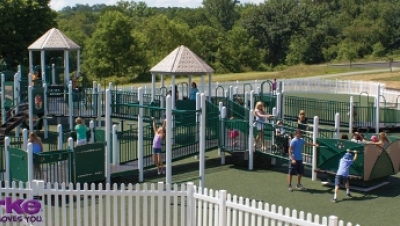

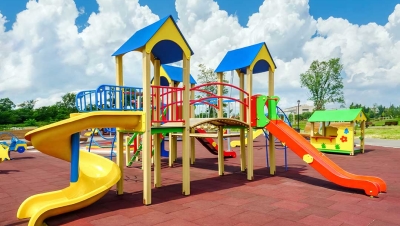







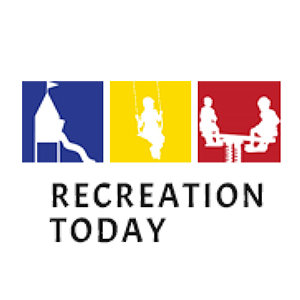
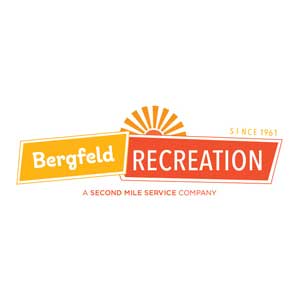
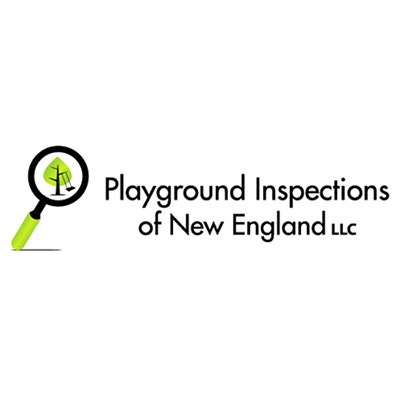

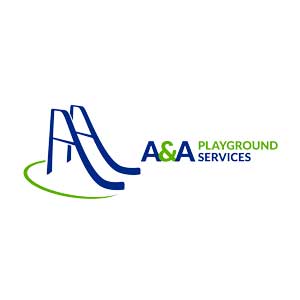
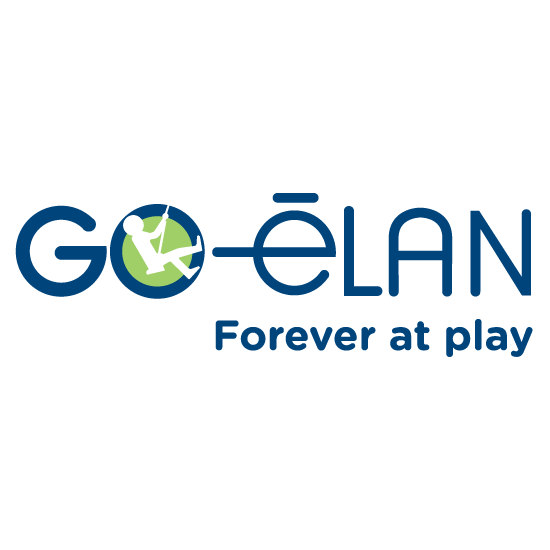
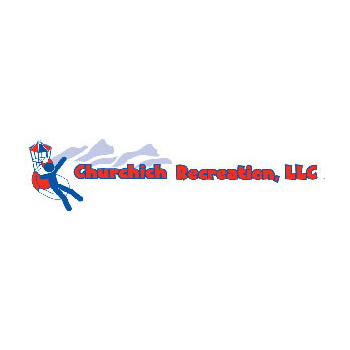
Add new comment